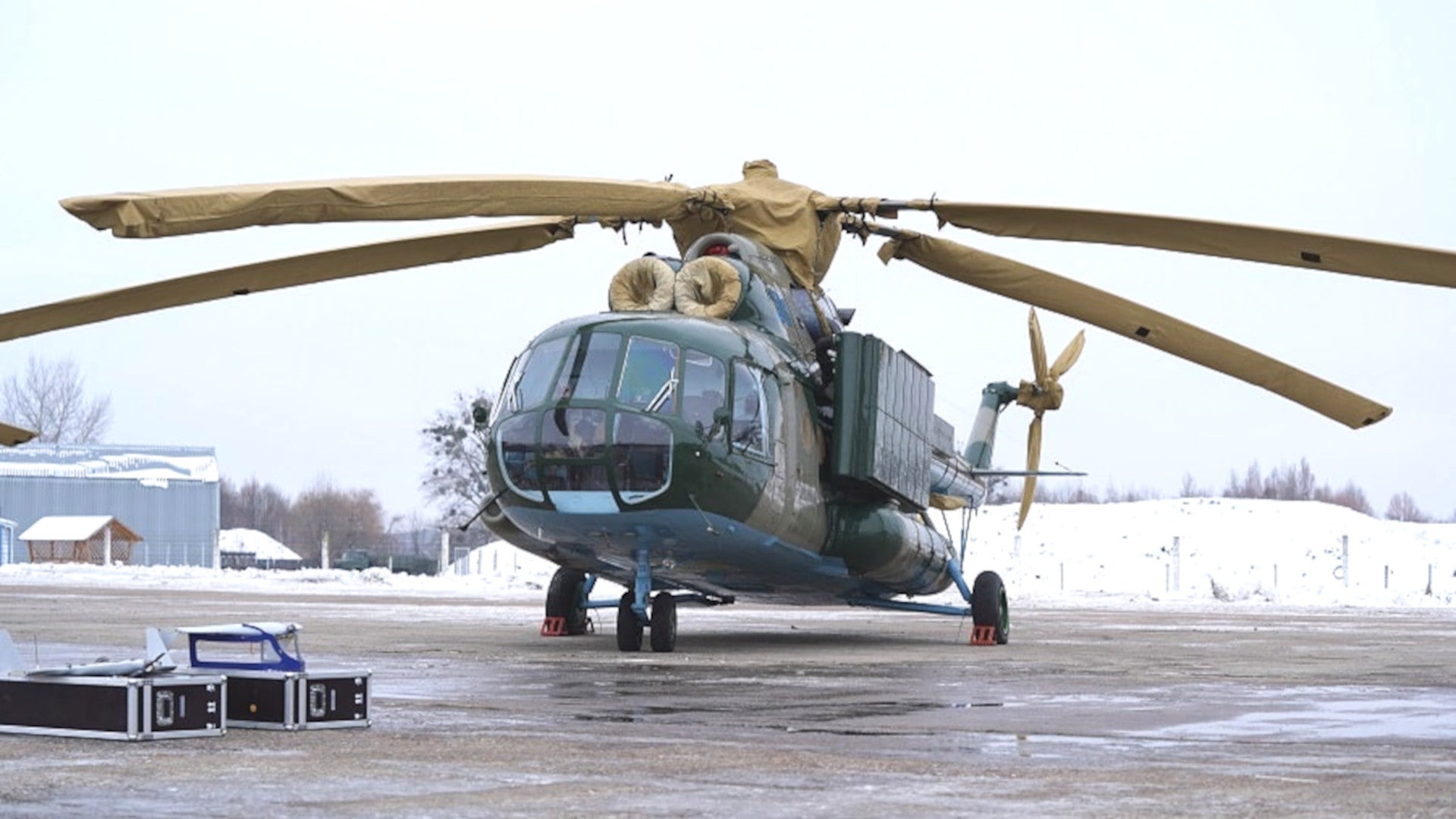Ukraine recently got two electronic warfare helicopters back into service after an overhaul at the Konotop Aircraft Repair Plant. This is just one of the Ukrainian military’s efforts to refurbish older Soviet-era systems and acquire more advanced weapons and military equipment amid an ongoing conflict with Kremlin-backed separatists. Experts and observers have also been watching for possible signs of a more overt Russian intervention following a naval skirmish between the two countries’ security forces in November 2018.
The Ukrainian Air Force formally accepted delivery of the Mi-8MTPB and Mi-8MTPI helicopters at a ceremony at Ozerne Air Base in the western half of the country on Dec. 21, 2018. It is not clear how many of either of these Cold War-era variants Ukraine still has in operation in total.
The two types are instantly recognizable by the large, phased array antennas fitted to the outside of both sides of the main cabin, as well as additional antennas and aerials on the tail and elsewhere. Both are based on the extremely popular Mi-8MT helicopter, an upgraded version of the original Mi-8 that is also commonly known by its export designation, Mi-17, or its NATO nickname, Hip. Mi-8/Mi-17 types remain in service in Russia and in dozens of counties around the world.
The Mi-8MTPB carries the Bison system, also written “Bizon,” a communications jamming suite. This version has the main antennas mounted near the rear of the central fuselage and features large heat exchangers to keep the powerful electronics cool.
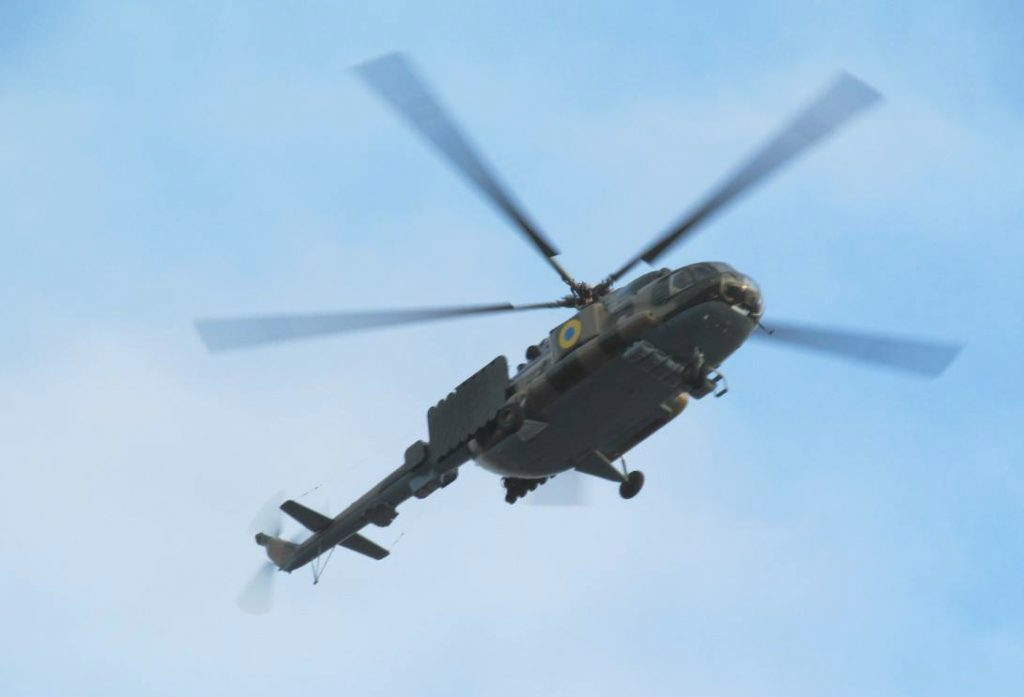
Bison’s main job is to scramble hostile radios and other communications nodes, but also has a radio direction finding capability to locate those targets. This gives it a very limited secondary ability to act as an electronic intelligence platform, identifying enemy positions based on their transmissions.
The Mi-8MTPI has the Ikebana jamming system, which is a stand-off jammer intended to disrupt an opponent’s battlefield radars, including air search and fire control types associated with air defense systems. This variant has its antennas more centrally located on either side of the helicopter, making it easy to differentiate it from the MTPB version.
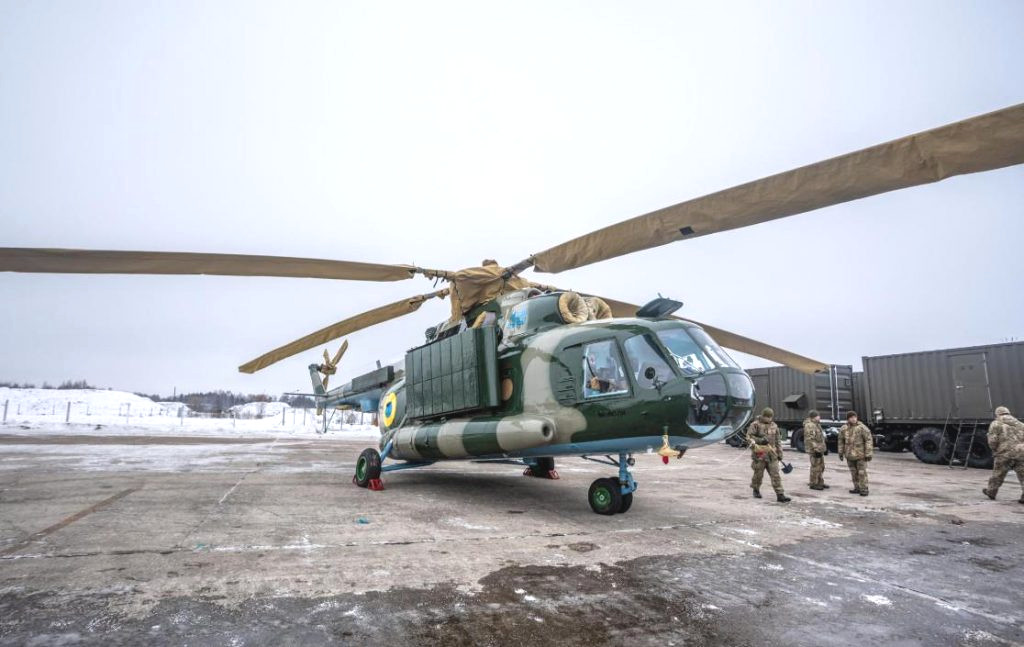
The MTPI also has the ability to detect and determine the general location and type of hostile emitters, giving it a limited capacity to conduct intelligence gathering missions on enemy defenses. When the Soviet Union introduced the type in the latter half of the Cold War, part of the goal was to provide more of a multi-mission capability over existing Mi-8/Mi-17-based jammers.
We don’t know if Konotop, also known as Aviakon, which is part of the Ukrainian state arms conglomerate UkrOboronProm, updated the actual electronic warfare equipment in any way as part of the overhaul. Giving the MTPB an actual communications intercept capability, for instance, would greatly improve the system’s ability to function both as a jammer and intelligence gathering platform. Both variants would almost certainly benefit from upgrades to expand the range of frequencies they can detect and jam, as well.
We also don’t know if the helicopters themselves received any substantial upgrades during the overhaul process, either. In 2016, Ukrainian aviation firm Motor Sich announced plans for an update package for the country’s basic Mi-8MT armed transport types, known as the Mi-8MSB-V, in cooperation with Polish companies. The new variant would feature updated avionics and cockpit features, including multiple digital multi-function displays, as well as new sensors and self-defense features.
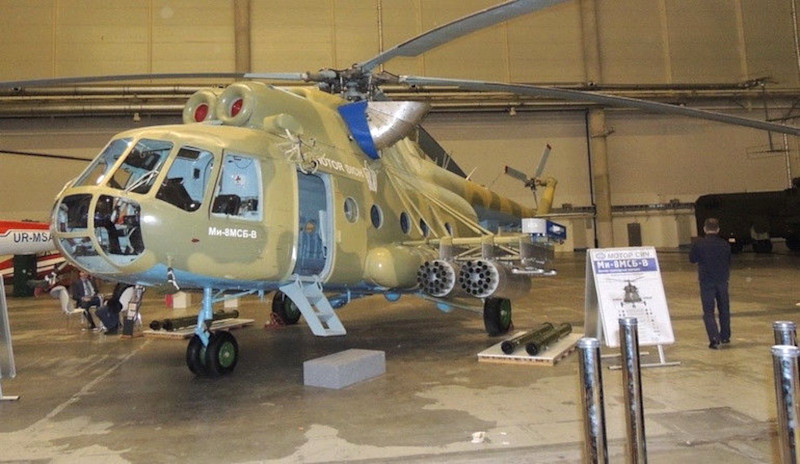
Regardless, electronic warfare has already been a major component of the conflict between the Ukrainian government and Russian-supported separatists in the country’s eastern Donbass region. The Kremlin has deployed and otherwise supplied various ground-based systems that have given the rebels a decided edge in many instances.
“In Eastern Ukraine, these EW [electronic warfare] systems have proved devastating to Ukrainian radio communications, are capable of jamming unmanned aircraft systems (UAS), and can broadcast false GPS signals (an effect called spoofing),” a 2016 U.S. Army manual outlining Russian hybrid warfare tactics and capabilities explained. “In another example from Eastern Ukraine, a Ukrainian army unit was broadcasting a radio message when it received accurate artillery fire, sustaining multiple casualties. The Ukrainian unit then received text messages on their cell phones from the Russian Led Separatist commander asking how they liked the artillery.”
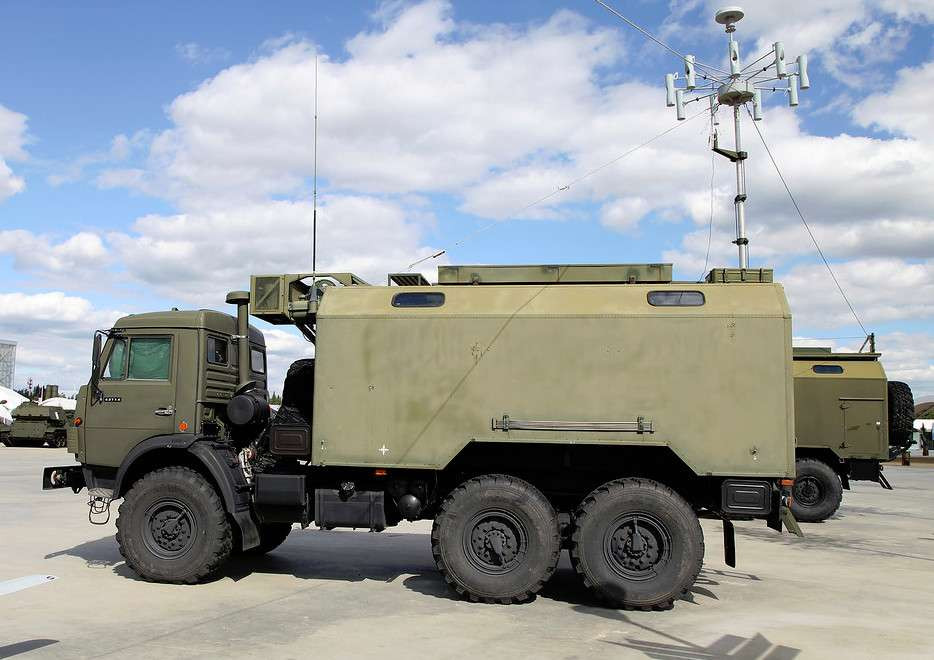
Those same separatists have often had access to surface-to-air missile systems from Russia, if not direct support from actual Russian units, which have proven to be a significant threat to Ukrainian fixed and rotary wing aircraft in the past. In one particularly infamous instance in 2014, a Russian-operated Buk SAM system shot down Malaysian Airlines Flight 17 as it flew over the country, possibly mistaking it for a Ukrainian military plane.
Having a clear picture of the separatist and Russian electronic order of battle – radars, command and control nodes, and other emitters it has in place – would be vital for Ukrainian forces during any major, all-out conflict with Russia and its proxies. Any available Mi-8MTPIs, or possibly even MTPBs, could help in gathering that information and watching for any changes in posture.
Road-mobile and off-road capable surface-to-air missile systems, in particular, might regularly shift positions. Persistent monitoring would also give Ukrainian personnel better insight into the standard operating procedures of Russian and Russian-backed forces, which, in turn, could expose useful vulnerabilities. The jamming helicopters could work directly with fixed and rotary wing aircraft conducting destruction of enemy air defenses missions, or DEAD, by helping to spot and jam targets and potential threats, too.
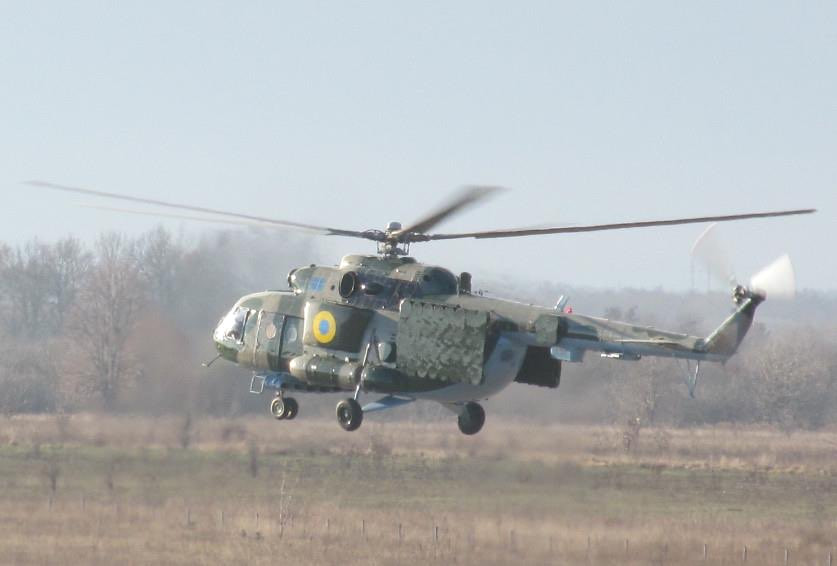
Jamming systems such as the Bison and Ikebana, though older and with more limited capabilities, could still help Ukrainian forces close the electronic warfare gap in other ways, too, such when fighting against separatists who often use cell phones and other unencrypted, commercial communications systems. The direction finding and target locating functionality the Mi-8MTPB and Mi-8MTPI offer might be useful for near real-time monitoring the movement of insurgent forces, as well. On the other hand, the limited number of total jamming helicopters in Ukrainian inventory would unfortunately also limit the overall area they would be able to cover at once.
Since Russia illegally seized control of its Crimea Region in 2014 and began supporting the separatists, Ukraine has been working to modernize its military in general, too. Just in 2018, the country refurbished a small number of S-300V long-range surface-to-air missile systems, worked to modernize shorter range S-125 SAMs, and pushed ahead with development of its Neptune ground-launched anti-ship missile system. It has also reached out to acquire new weapons and other military equipment abroad, especially from the United States.
The impetus for modernizing the Ukrainian armed forces has only grown since a trio of the country’s naval vessels squared off with the Russians in the Strait of Kerch, which separates the Black Sea from the Sea of Azov, on Nov. 25, 2018. This engagement left three of Ukraine’s boats and a number of Ukrainian sailors in Russian custody and inflamed tensions to the point there have been fears that a full-blown war between the two countries might erupt in the future.

A resolution urging Ukrainian President Petro Poroshenko to formally declare war on Russia is presently making its way through the Rada, Ukraine’s parliament. More worrisome, though, are completely unsubstantiated reports, amplified by Kremlin officials and Russian state and quasi-state media, suggesting that Ukraine is preparing to launch chemical weapon attacks in the Donbass. This appears to be part of a coordinated information warfare campaign and has all the hallmarks of similar disinformation Russia has spread about rebel forces in Syria.
The Russians have used accusations of Syrian insurgents conducting chemical weapons attacks to justify the brutal campaign by Syria’s dictator Bashar Al Assad to defeat his opponents, which they actively support and that has killed thousands of civilians in the process. The unsupported claims about rebel chemical weapons attacks in that country also deflect from the very real use of those types of weapons by government forces. Russia stands separately accused of using a nerve agent to try to kill a former Russian intelligence agent in the United Kingdom in 2018, as well.
So far, thankfully, the actual threat of a broader, open conflict between Russia and Ukraine still seems relatively low. Despite reports of an uptick in fighting between Ukrainian and separatist forces, there are reports that a ceasefire may begin on Dec. 29, 2018, just in time for New Years. The Ukrainian government also ended a period of limited martial law, which began after the naval skirmish in the Kerch Strait, on Dec. 26, 2018.
The Kremlin had sent additional armor and artillery into areas along the border between the two countries earlier in December 2018. More recently, the Russian Air Force deployed more than a dozen
Su-27 and Su-30 Flanker fighter jets to Belbek Air Base in occupied Crimea, adding to the Russian combat aircraft already situated at that base. The Kremlin has significant qualitative and quantitative advantages in airpower over Ukraine in general.
Still, Russia’s latest disinformation efforts may simply be intended to dissuade Ukrainian forces from launching their own new offensives into the Donbass. Its military buildup in the region may similarly be more of a deterrent to authorities in Kiev, as well as their international partners, than a prelude to a major operation.

But these are exactly the kind of movements that Ukraine’s small fleet of electronic warfare helicopters might get called in to try to monitor. Any unusually elevated signal activity could be a good sign that the various Russian and separatist maneuvering is actually turning into a more imminent threat.
Contact the author: jtrevithickpr@gmail.com
